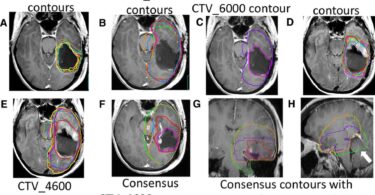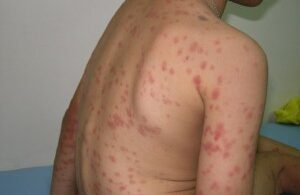Because we treat individuals individually, every day is a school day in homeopathic practice. The emergence of Covid, its variants and the subsequent use of Covid vaccines has certainly taken me back to the classroom, and the following cases highlight some of my observations and learnings.
CASE 1 – Observations & remedies for covid 19 in relation to natural disease, natural immunity, artificial disease and vaccinosis
My first case involves a 48-year-old female client, whom I had been successfully treating constitutionally with a focus on hot flushes and anxiety, since May 2019. The constitutional remedies of choice, based on a totality of symptoms, were Calcarea Phosphoricum followed by Calcarea Iodum.
Between May 2019, and her contracting Covid in late November 2020, we had worked with potencies between 200c and 10M. In this woman’s case Coronavirus symptoms included sinus congestion, frontal headache, a short-lived fever, cough, dyspnoea, lethargy and the loss of taste and smell.
Without any conventional medical intervention, and apparently supported by a naturally responsive immune system, by January 2021 she reported feeling “well” and “on the mend”, with restored vitality (7-8/10 10=optimum), and the original presenting complaints were under control.
She did however report mild dyspnoea exacerbated by damp, as well as continued loss of taste and smell. With further constitutional support, by early March she client reported being “fully recovered”, no longer noticing dyspnoea in damp weather and confirming a general sense of wellbeing at 8/10 (10=good). Taste and smell had been 65-70% restored.
She received her first vaccine (Astra Zeneca) on 27th March with the only side effects being a sore arm. As no further improvement was noted to loss of taste and smell, at her appointment on 6th May we discussed the symptoms in more detail.
Although, she could taste, any taste was brief and not sustained. Salty tastes were a little more long-lasting. Odours were also sensed more briefly, whilst she was more sensitive to “bad smells”. For example, colourants and chemicals were felt to be “overpowering”.
Based on the fact that Phosphorus has an affinity with the neurological system, and that the repertories (Boericke / Clarke) record “loss of taste”, “loss of smell” and also under Nose, “foul imaginary smells”, I prescribed Phosphorus 1M in two doses, 2 weeks apart (water potencies).
She received her second vaccine on 22nd May 2021, shortly after which she was diagnosed with pleurisy. It is worth noting at this point that a large UK study (https://www.sciencedirect.com/science/article/pii/51473309921) concluded that people previously infected by the natural disease and then vaccinated, were 56% more likely to experience a severe side effect that required hospital care.
Fortunately, she did not require hospital care. She was given a course of antibiotics, and a homeopathic prescription of Antimonium Tartaricum 30c & 200c based on its efficacy in relation to vaccinosis: In particular, “vaccination resulting in respiratory complaints”.
This prescription was given at the beginning of July and by 31st August, she reported, not only significant improvement in respiratory symptoms, but noticeable difference in symptoms relating to taste and smell. Namely, cough 90% better, dyspnoea 80% better, taste does “not dissipate as quickly”, and the sense of smell was “not so hypersensitive”.
By 12th October 2021 she recorded no respiratory symptoms, and reported that she had largely got her taste back (although butter did not taste the same). Added to that, “more odors were more dominant”. She felt that her sensory symptoms were moving in the right direction. In this case my learnings to date have included:
- Clients contracting the natural disease would generally appear to be immunologically well supported by regular homeopathic treatment. The majority of my clients have not contracted the natural disease to date, or may have been asymptomatic, their immune systems dealing with the virus quietly.
- Phosphorus may be a useful remedy in cases of “loss of taste and smell”, which is both a common side effect of the coronavirus natural and the artificial disease (vaccination).
- Antimonium Tartaricum may be a useful remedy in cases of vaccinosis resulting in respiratory complaints.
CASE 2: The use of tautopathic remedies in cases of vaccinosis
Homeopaths are educated to respect the holy grail of the “simillimum”, and treating “like with like”. Tautopathy is a method of curing or removing the bad effects of conventional drugs and environmental exposures by means of identical potentized homeopathic medicines.
It is defined as the science of antidotes and toxicology. When used as a pre-treatment, it is said to be very effective in removing obstacles that would otherwise keep well indicated remedies from working, or even prevent aggravations from occurring.
Drug layers, drug abuse, addictions, cravings and drug overdoses can all be treated with tautopathic methods. It is said that the first remedy ever prescribed in homeopathy was a tautopathic one, not a homeopathic one. Hahnemann used the remedy China (potentised Peruvian bark) to treat Peruvian bark poisoning. As Dr Manish Bhatia puts it, “ It is not homeopathy but it is pretty close to it”.
In my practice as a classical homeopath, I resort to tautopathy very rarely. However, I believe that it has a place in homeopathic practice and is a useful weapon in our armoury. My caveat is generally two fold:
(1) there needs to be a direct connection, and an irrefutable cause and effect between the disease agent and the symptom picture.
(2) There is no clear homeopathic simillimum.
The following case illustrates the usefulness of the tautopathic prescription is such circumstances.
My client was a 70- year-old gentleman whose primary presenting complaints were heightened anxiety accompanied by suicidal thoughts and impulses – which we were making steady progress on since July 2019. He also shared that he had been left with months of flu symptoms after a flu vaccination in 2016.
Since 2018 he had been experiencing persistent fatigue, muscle aches, dizziness, bronchitis and congestion in the sinuses and ears. These symptoms had responded well and quickly to his prescribed remedy of Carcinosinum 30c, followed by 200c.
Treatment continued and on 23rd February 2021 he recorded his mental state as “really positive”. He did however report that since his first Covid injection (Astra Zeneca), 3 weeks prior, he was suffering with a tight chest, aches in the shoulder blades, backs of legs and knee caps, profound chilliness and headache which scored 10/10 (10 = bad).
He described a sensation of “fullness” as if his head would explode. As he was so buoyant in other ways, we agreed to watch and wait, and see if his vitality and natural immunity could make the difference. By his next appointment on 13th April the flu symptoms had worsened and had become persistent.
He complained of muscles aches, predominantly left-sided, congestive headaches, blocked sinuses, a catarrhal cough offering frothy clear expectoration, a right-sided ache in the abdomen, and significant weakness scoring 1-2/10 (10=good). He felt as if his “body and brain were broken”.
The link between the vaccine and the onset of symptoms seemed irrefutable, with no compelling simillimum. Added to which the symptoms had not improved over two and a half months. It was for that reason that he was prescribed C19A 2020 on 13th May. Two ascending doses (30c & 200c) were given in water 7 days apart.
Exactly one month later he returned. My notes are accompanied by a number of ticks in the margin. Headaches, fever, blocked sinuses, right-sided abdominal ache and cough, were no longer part of the symptom picture. He reported slight traces of muscle aches, with those on the left side “a lot less”, in addition to “more energy” (6-7/10) and a “very good” appetite.
He had resumed domestic tasks and finished the consultation by concluding that, “I can’t think of anything negative”. The remedy was not repeated, and I moved on with the case focusing on the consequences of a relationship breakdown, returning to Carcinosininum once again.
©Daniela Karsten






Great case and results
Cathy Brooks R Hom Int